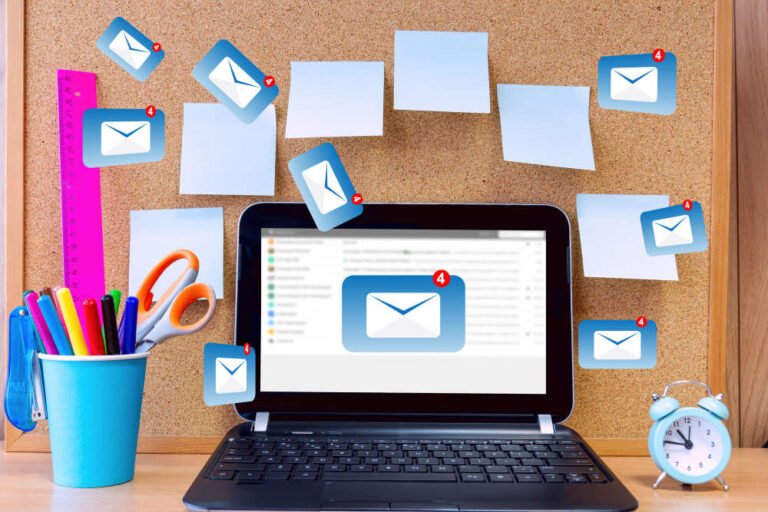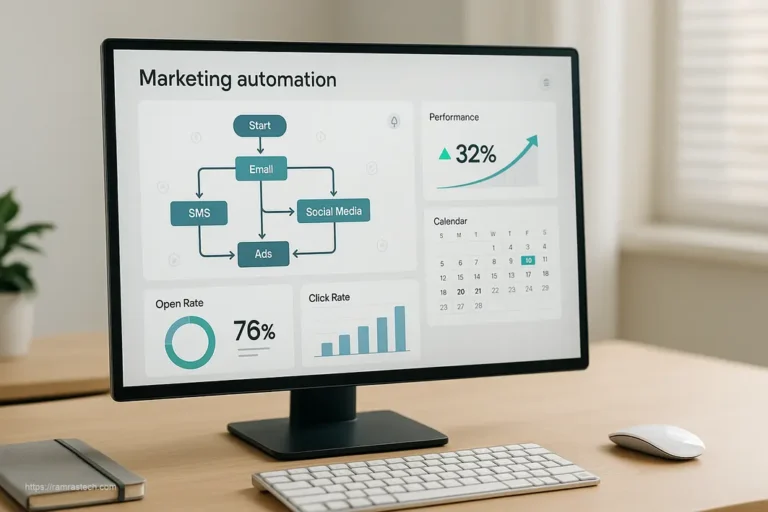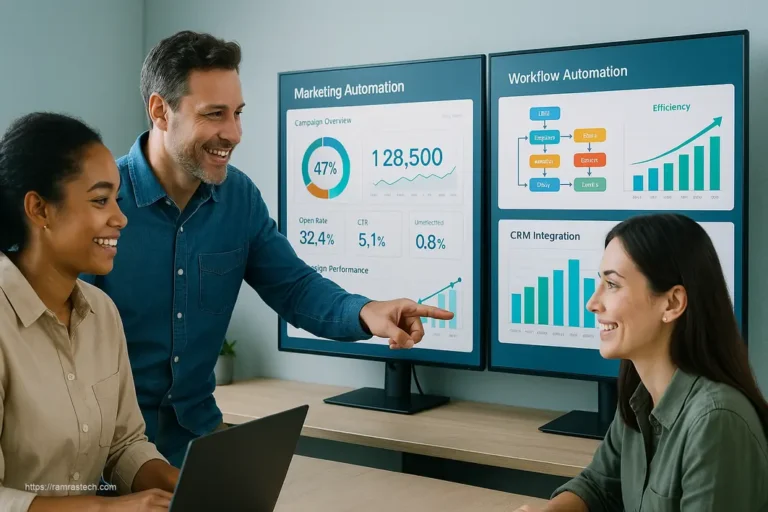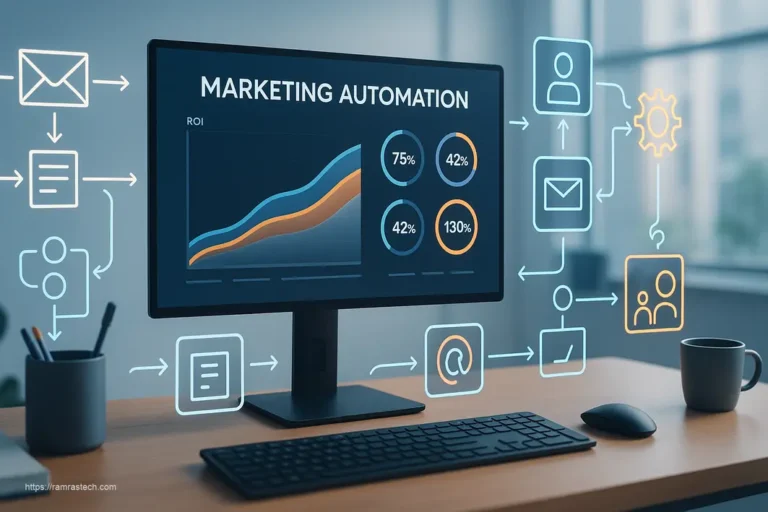Boost Your Business with These 5 Revolutionary Marketing Automation Hacks

Ever feel like there aren’t enough hours in the day to handle all your marketing tasks? You’re definitely not alone. As businesses grow, marketing demands multiply exponentially, leaving teams scrambling to keep up. That’s where marketing automation hacks come into play – they’re not just nice-to-haves anymore, they’re absolute game-changers in today’s digital landscape.
Marketing automation has evolved from a luxury to a necessity, with 76% of companies using automation in some form according to recent studies. But here’s the thing – simply implementing automation tools isn’t enough. The real magic happens when you leverage clever hacks that supercharge your efforts, saving precious time while dramatically boosting your results.
I’ve spent years helping businesses transform their marketing operations through smart automation, and I’m excited to share the most powerful hacks that consistently deliver remarkable outcomes. These aren’t just theoretical concepts – they’re battle-tested strategies that can revolutionize how you connect with customers and grow your business.
What Is Marketing Automation and Why Does It Matter?
Marketing automation refers to technology platforms and software designed to streamline, automate, and measure marketing tasks and workflows. It goes beyond simply scheduling social posts or emails – comprehensive automation touches every aspect of your marketing ecosystem.
Consider this: according to a study by Nucleus Research, marketing automation drives a 14.5% increase in sales productivity and a 12.2% reduction in marketing overhead. Those aren’t just incremental improvements – they’re business-transforming numbers that directly impact your bottom line.
The beauty of marketing automation lies in its ability to:
- Eliminate repetitive, time-consuming tasks that drain your team’s creativity
- Deliver personalized experiences at scale (something impossible to do manually)
- Provide actionable intelligence on what’s working and what needs adjustment
- Maintain consistent communication across multiple channels
- Nurture leads through their entire journey without constant manual intervention
But the real question is: how do you unlock the full potential of marketing automation? That’s exactly what we’re diving into with these five revolutionary hacks.
Hack #1: Implement Smart Lead Scoring That Actually Works
Lead scoring sounds simple in theory – assign values to potential customers based on their likelihood to convert. But most businesses struggle with creating scoring systems that actually predict purchase intent. Here’s how to build a lead scoring system that delivers genuine results:
The Multi-Dimensional Approach
Forget basic demographic scoring – it’s too limited. Instead, create a composite scoring system that evaluates prospects across multiple dimensions:
-
Behavioral Scoring: Track meaningful actions like visiting pricing pages, watching product demos, or downloading comparison guides. Each action should carry different point values based on how strongly they correlate with purchases.
-
Demographic/Firmographic Fit: Assign points based on how well the prospect matches your ideal customer profile. For B2B, this might include company size, industry, and role; for B2C, factors like age, income level, or geographic location.
-
Engagement Velocity: Don’t just track what prospects do – measure how quickly their engagement is increasing or decreasing. A prospect who suddenly increases their engagement deserves priority attention.
-
Negative Scoring: Subtract points for disengagement signals like unopened emails, canceled appointments, or long periods of inactivity.
HubSpot’s automation platform offers robust lead scoring capabilities that incorporate these dimensions, making it significantly easier to identify your hottest prospects. According to their internal data, companies using multi-dimensional lead scoring see 30% higher conversion rates compared to those using simple models.
Automated Score-Based Actions
Here’s where the real hack comes in: don’t just score leads – trigger specific automated workflows based on score thresholds:
-
When leads reach 75-90% of your “sales-ready” threshold, automatically enroll them in a high-touch nurture sequence with more product-specific content.
-
For leads that hit your qualification threshold, instantly alert the relevant sales rep via your CRM, Slack, or email with a complete engagement history.
-
For leads showing purchase intent but not quite sales-ready, automatically invite them to a webinar or product demo.
This approach ensures you’re not just collecting data – you’re acting on it instantly without requiring manual intervention.
One of my clients, a SaaS company in the project management space, saw their lead-to-demo conversion rate jump by 42% after implementing this automated, multi-dimensional scoring approach. The sales team reported higher quality conversations and less time wasted on unqualified prospects.
Hack #2: Create Hyper-Personalized Content Experiences with Dynamic Content Blocks
Personalization isn’t new, but most marketers are still stuck at the “Hello [First Name]” level. True personalization creates completely different experiences based on user attributes and behaviors. Here’s how to implement dynamic content that transforms engagement rates:
Beyond Basic Personalization
The key hack is to build a content foundation with interchangeable modules that can be dynamically swapped based on user data. This applies to:
-
Email Campaigns: Create multiple versions of each content block (headlines, product recommendations, CTAs) that automatically display based on segment-specific triggers.
-
Landing Pages: Display different hero images, testimonials, and feature highlights based on the visitor’s industry, referral source, or previous behavior.
-
Website Experiences: Adjust navigation options, featured content, and calls-to-action based on whether someone is a first-time visitor, repeat visitor, or existing customer.
ActiveCampaign excels at this type of dynamic content deployment, allowing you to create these personalized experiences without needing a developer for each variation.
The Content Mapping Matrix
To implement this effectively, create a content mapping matrix that cross-references:
- Buyer persona or segment
- Funnel stage
- Previous engagement history
- Behavioral signals
Then develop content variations for each intersection point. Yes, this requires more upfront content creation, but the automation handles all the deployment logistics, making it scalable.
When digital marketing agency Mailshake implemented this approach for their email sequences, they reported open rates increasing by 28% and click-through rates jumping by 41%. The more specific and relevant your content, the more engaged your audience becomes.
Practical Implementation Example
Let’s say you’re sending an email newsletter about marketing automation (meta, right?). Instead of sending the same content to everyone:
- Subscribers who previously engaged with content about email marketing would automatically see examples focused on email automation.
- Those who showed interest in analytics would see content blocks highlighting reporting capabilities.
- Enterprise-level contacts would see case studies from similar large organizations.
- Small business owners would see affordability-focused messaging and SMB case studies.
All from a single campaign, with the variations handled automatically by your marketing automation platform.
Hack #3: Build Cross-Channel Behavioral Trigger Campaigns
Most marketing automation focuses on single channels – email sequences, social media posting, or ad management. The real power comes from creating cross-channel campaigns that respond to behaviors across your entire digital ecosystem.
The Omnichannel Trigger Network
Develop a network of triggers that work across channels:
-
When someone abandons a cart, don’t just send an email – also retarget them with specific ads addressing their objections.
-
If a prospect watches over 75% of a product video, automatically enroll them in a related webinar invitation sequence AND adjust their website experience to highlight that product line.
-
When someone clicks a link in your newsletter but doesn’t convert, trigger a personalized follow-up through a different channel (SMS or social DM) with a more compelling offer.
Marketo and HubSpot offer powerful cross-channel capabilities that make these sophisticated workflows possible without complex technical setup.
The Engagement Escalation Ladder
Build what I call an “engagement escalation ladder” – a series of increasingly high-touch interactions across different channels based on user engagement signals:
- Start with low-commitment channels (social content, blog posts)
- Escalate to moderate commitment (newsletter subscription, content downloads)
- Move to higher commitment (webinar attendance, free trial)
- Culminate in direct sales interaction (demo request, consultation)
The key innovation is automating this progression based on engagement metrics rather than time-based sequences. This ensures prospects never receive high-commitment requests before they’ve shown appropriate interest levels.
Marketing agency AgileAutomations implemented this approach for their e-commerce clients and found it increased customer lifetime value by 23% compared to single-channel automation strategies.
Privacy-Compliant User Tracking
With privacy regulations tightening, a crucial part of this hack is implementing compliant cross-channel tracking. Use:
- First-party cookies and logged-in user experiences
- Progressive profiling to gradually build user profiles with explicit consent
- Cookieless tracking options like machine learning-based identity resolution
The goal is maintaining seamless cross-channel experiences while respecting privacy regulations – a balance that’s becoming increasingly important.
Hack #4: Implement AI-Powered Conversion Rate Optimization
Conversion optimization traditionally requires extensive testing and analysis. However, new AI-driven marketing automation tools can dramatically accelerate this process by automatically identifying and implementing winning variations.
Automated Testing Expansion
Instead of simple A/B tests, implement multivariate testing on autopilot:
- Test multiple elements simultaneously (headlines, images, CTAs, layouts)
- Allow the AI to identify winning combinations and automatically reallocate traffic
- Use machine learning to analyze conversion patterns across segments
Platforms like Optimizely and VWO now offer AI-powered testing that can dramatically shorten the optimization cycle from weeks to days.
Predictive Content Optimization
The real leap forward comes with predictive optimization that doesn’t just test variations but actually generates them:
- Use AI tools to analyze your highest-converting content and suggest variations
- Implement natural language processing to test different messaging approaches
- Automatically identify the optimal content length, format, and complexity for different segments
One e-commerce client implemented this approach and saw their product page conversion rate increase by 18% in just three weeks, with the system continuously learning and improving.
In a case study from Encharge.io, a SaaS company implemented AI-driven optimization for their onboarding sequence and reduced their time-to-value metric by 35%, significantly improving customer retention.
Implementation Approach
Start small with this hack – choose a high-volume conversion point (like your main lead capture form or product page) and implement the AI-driven testing. Once you’ve established a baseline improvement, expand to other conversion points across your funnel.
The beauty of this approach is that the AI continuously learns and adapts, becoming more effective over time without requiring constant manual oversight.
Hack #5: Build Predictive Customer Journey Mapping
Traditional marketing automation follows pre-defined paths. The revolutionary approach is using predictive analytics to anticipate customer needs and behaviors before they occur.
Anticipatory Engagement Model
Build what I call an “anticipatory engagement model” that predicts what customers need next:
- Analyze behavior patterns from your existing customer base to identify common progression paths
- Use machine learning to recognize early indicators that predict specific needs or pain points
- Automatically deploy resources (content, offers, support) before customers actively seek them
This approach fundamentally shifts automation from responsive to predictive – addressing needs customers haven’t even expressed yet.
Churn Prevention Automation
One of the most valuable applications is automated churn prevention:
- Identify behavior patterns that historically precede cancellations or disengagement
- Automatically trigger intervention campaigns when these patterns emerge
- Deploy personalized retention offers based on the specific risk factors identified
A subscription-based client implemented this approach and reduced churn by 22% in the first quarter after deployment. The system identified subtle disengagement signals that would have been impossible to spot manually.
Implementation Strategy
To implement this effectively:
- Start by analyzing your customer data to identify common journey patterns and transition points
- Build behavior-based scores for different potential outcomes (conversion, upsell readiness, churn risk)
- Create automation triggers based on these scores that deploy appropriate resources
- Continuously refine your predictive models based on outcomes
According to research from Foundr, companies implementing predictive customer journeys see 40% higher customer satisfaction scores and 25% higher revenue per customer compared to those using static journeys.
Putting It All Together: Your Marketing Automation Revolution Roadmap
Implementing all five hacks simultaneously might seem overwhelming, so here’s a strategic approach to revolutionizing your marketing automation:
Month 1-2: Foundation Building
Start with Hack #1 (Smart Lead Scoring) as it provides the foundation for prioritization. Implement your scoring model and basic automated actions based on score thresholds.
Month 3-4: Personalization Implementation
Move to Hack #2 (Dynamic Content) by identifying your key customer segments and creating modular content variations. Deploy these across your highest-impact channels first.
Month 5-6: Cross-Channel Integration
Implement Hack #3 (Behavioral Trigger Campaigns) by connecting your various marketing platforms and creating your first cross-channel automation workflows.
Month 7-8: Optimization Acceleration
Add Hack #4 (AI-Powered CRO) to your highest-traffic conversion points, allowing the system to begin learning and optimizing.
Month 9-12: Predictive Capabilities
Finally, implement Hack #5 (Predictive Journey Mapping) once you have sufficient data from your earlier automation efforts to build reliable predictive models.
This phased approach ensures you build capabilities progressively, with each hack laying the groundwork for the next.
Common Challenges and How to Overcome Them
As you implement these marketing automation hacks, you’ll likely encounter some common challenges:
Data Silos and Integration Issues
Challenge: Information trapped in disconnected systems prevents unified automation.
Solution: Prioritize platforms with robust API capabilities and consider middleware tools like Zapier or Integromat to connect disparate systems without expensive custom development.
Team Skill Gaps
Challenge: Your team may lack experience with advanced automation capabilities.
Solution: Start with focused training on your specific platform, or consider bringing in a marketing automation specialist for the initial setup. Many automation platforms offer certification programs specifically designed for marketers without technical backgrounds.
Data Quality Problems
Challenge: Automation is only as good as your data quality.
Solution: Implement progressive profiling to gradually build complete customer profiles, and use data enrichment services like Clearbit or ZoomInfo to fill critical gaps.
Measurement Confusion
Challenge: Determining whether your automation efforts are successful.
Solution: Focus on outcome metrics (revenue, conversion rates) rather than activity metrics (emails sent, automation workflows created). Establish clear baseline measurements before implementing new automation capabilities.
According to SocialPilot’s research, companies that address these challenges systematically see 80% higher success rates with their marketing automation initiatives.
FAQs About Marketing Automation Hacks
What’s the difference between marketing automation and email marketing?
Email marketing is just one channel, while marketing automation encompasses your entire marketing ecosystem. Marketing automation includes email but extends to website personalization, ad targeting, lead management, customer journey orchestration, and analytics. Think of email marketing as a single instrument, while marketing automation is the entire orchestra working in harmony.
How much does it cost to implement effective marketing automation?
Costs vary widely based on business size and needs. Entry-level automation platforms start around $200-$300 monthly for small businesses, while enterprise solutions can range from $1,500-$4,000+ monthly. However, the ROI typically justifies the investment, with businesses reporting average returns of $5.44 for every dollar spent on marketing automation according to Nucleus Research.
Do I need technical skills to implement these marketing automation hacks?
Modern marketing automation platforms have become increasingly user-friendly. While basic technical familiarity helps, most of these hacks can be implemented without coding knowledge. The more complex implementations might benefit from initial setup assistance from a specialist, but ongoing management can typically be handled by marketers with platform-specific training.
How long does it take to see results from marketing automation?
You’ll typically see three phases of results: immediate operational improvements (time savings, workflow efficiency) within weeks; engagement improvements (higher open rates, click-through rates) within 1-2 months; and revenue impact (improved conversion rates, higher customer value) within 3-6 months. The key is setting appropriate expectations for different types of outcomes.
Which marketing automation platform is best for small businesses?
For small businesses, platforms with strong value-to-complexity ratios stand out: ActiveCampaign offers robust capabilities without overwhelming complexity; MailerLite provides essential automation at budget-friendly prices; and HubSpot’s free and starter tiers provide excellent entry points with room to grow. The best choice depends on your specific marketing priorities and technical comfort level.
Conclusion: Your Marketing Automation Revolution Starts Now
Marketing automation isn’t just about efficiency – it’s about creating remarkable customer experiences that would be impossible to deliver manually. These five hacks represent the cutting edge of what’s possible, transforming automation from a basic utility to a competitive advantage.
Remember that the goal isn’t automation for its own sake, but rather creating more meaningful connections with your audience at scale. Each of these hacks supports that mission by making your marketing more responsive, relevant, and results-driven.
Start with the hack that addresses your most pressing current challenge, and build from there. Marketing automation is a journey, not a destination – each improvement lays the foundation for the next evolution of your capabilities.
Which of these marketing automation hacks do you think would have the biggest impact on your business? I’d love to hear your thoughts and experiences in the comments below!
